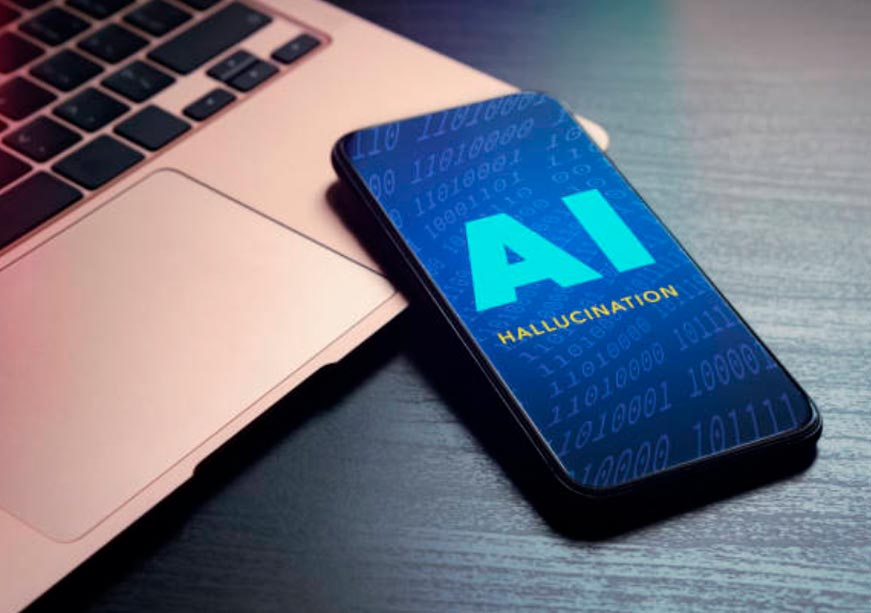When legal AI invents cases, the risk is real—justice, credibility, and ethics hang in the balance without strong safeguards and human oversight.
Artificial Intelligence (AI) hallucinations refer to instances where AI systems generate outputs that are factually incorrect, misleading, or fabricated, often with a convincing degree of plausibility. In the legal sector, this phenomenon poses serious implications. Legal professionals are increasingly using AI tools to streamline research, draft pleadings, and synthesise legal arguments. However, these systems operate on probabilistic prediction rather than grounded legal reasoning. Consequently, they may generate references to non-existent case laws, statutes, or judicial opinions, presenting them with stylistic accuracy that creates an illusion of authority. This could lead to grave implications, such as courts relying on fictitious precedents, erroneous filings, and professional misconduct among advocates.
Legal professionals are increasingly using AI tools to streamline research, draft pleadings, and synthesise legal arguments.
The root causes of AI hallucinations include flawed or biased training data, lack of proper grounding in real-world legal facts, and the inherent limitations of large language models (LLMs) that prioritise linguistic coherence over factual verification. Semantic drift, where models misinterpret or distort meanings over time and corpus bias, where the AI is trained on incomplete or outdated legal texts, also contribute to these errors. A striking example comes from OpenAI’s report, which revealed that its latest models—o3 and o4 mini—hallucinated at rates of 33 percent and 48 percent, respectively, during a Question and Answer (Q&A) test. Alarmingly enough, the reasons for increased hallucinations continue to remain ambiguous.
The legal field—grounded in accuracy, evidence, and ethical responsibility—cannot afford such statistical guessing. AI tools lack the deductive logic and professional judgment that lawyers apply to validate legal arguments. When hallucinations go unchecked, they may mislead even seasoned practitioners, undermine public confidence in judicial proceedings, and expose attorneys to sanctions. Therefore, understanding the technical and ethical dimensions of AI hallucinations is crucial for ensuring that legal AI systems are used responsibly, with human oversight, factual verification, and rigorous training protocols in place.
India and the World: Cases of AI ‘acting up’
Recent global incidents underscore the gravity of these risks. In India, the Bengaluru bench of the Income Tax Appellate Tribunal (ITAT) was compelled to retract a tax ruling in Buckeye Trust v. PCIT-1 Bangalore after discovering it was based on fictitious case laws generated by an AI tool. The cited judgments were entirely non-existent, prompting a swift withdrawal, which highlights the perils of relying on unverified AI outputs.
AI tools lack the deductive logic and professional judgment that lawyers apply to validate legal arguments.
Similarly, in the United Kingdom (UK), the High Court of Justice King’s Bench Division, using its ‘inherent powers’ (used to regulate its own procedures and to enforce lawyers’ duties in court), opined, addressing concerns over lawyers’ suspected use of generative AI tools without proper verification of their output. Dame Victoria Sharp, President of the King’s Bench Division, emphasised the risk to public trust and judicial integrity, urging legal institutions to enforce strict professional and ethical compliance. Lawyers could otherwise face sanctions, from public admonishment to facing contempt of court proceedings and referral to the police.
In the United States (US), the case of Wadsworth v. Walmart Inc. saw sanctions against three attorneys for citing eight fake cases created by their firm’s AI platform, MX2.law. Despite remedial steps, the court emphasised that the duty to verify legal sources is non-delegable and that blind reliance on AI tools violates professional standards. These cases illustrate the nuances of AI misuse: it is not merely a technological flaw but a failure of legal diligence and ethical oversight. As AI tools become more sophisticated and accessible, their misuse—either intentional or inadvertent—can severely undermine legal credibility, court procedures, and client trust.
Hence, unchecked usage without rigorous human verification may result in a decreased transformative potential of enhancing legal efficiency and inevitably hinder justice systems, universally. Ensuring accountability, training, and regulatory frameworks is crucial worldwide.
The Necessary Steps
India already has policies in place that may assist in mitigating its current AI hallucination conundrum. The NITI Aayog’s Responsible AI – Approach Document, Part 1 (2021) outlines key principles: Safety and Reliability, Accountability, and Transparency to guide AI development and deployment. It mandates error testing and ongoing monitoring of AI systems to ensure reliable performance, minimising unintended harm. Its accountability principles emphasise stakeholder responsibility for AI’s impact, while transparency requires documentation and external audit mechanisms. This may serve as a foundational framework in mitigating the risks of AI hallucinations.
These cases illustrate the nuances of AI misuse: it is not merely a technological flaw but a failure of legal diligence and ethical oversight.
Addressing AI hallucinations in the legal field requires a collaborative approach involving AI model developers, deployers, courts, legal associations, and professionals. First, developers of law-focused models could prioritise data quality over volume, ensuring training datasets are diverse, current, and drawn from authoritative legal sources to minimise hallucinations. AI systems could be designed with built-in transparency, mandating disclosures about model architecture, their data sources, and performance benchmarks. Legal AI tools must undergo regular internal audits, bias mitigation, and data cleaning, with results published for public scrutiny. Its outputs could be accompanied by real-time citations linked to verified legal databases, enabling users to trace the origin of the information.
Furthermore, courts can institutionalise transparency by mandating disclosure of AI use in legal filings, as seen in recent standing orders by US judges and encourage compliance via Bar Council guidelines. Law firms and courts can establish internal governance codes that require human verification of AI-generated content. Additionally, legal professionals need to be trained in AI literacy, equipping them to cross-check citations, assess accuracy, and report errors. Legal bodies or associations such as the Society of Indian Law Firms could also develop standardised guidelines to ensure the responsible use of AI in practice by firms, akin to research and higher education institutions that are mandating guidelines for the ethical use of AI. Adherence to these codes of ethics could also serve as a form of industry self-regulation.
This may serve as a foundational framework in mitigating the risks of AI hallucinations.
To harness the benefits of AI in law without compromising integrity, a robust framework of human oversight, ethical standards, and technical transparency is essential. Only through collaborative vigilance can legal AI systems truly serve justice rather than distort it.
Debajyoti Chakravarty is a Research Assistant at the Observer Research Foundation.
Disclaimer: This commentary originally appeared on ORF website.












